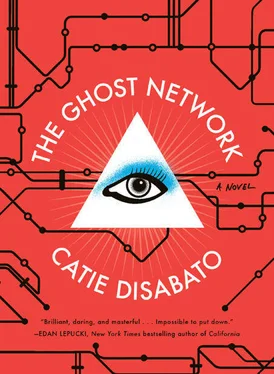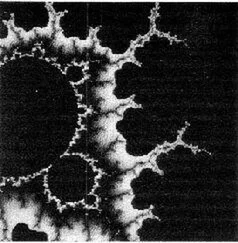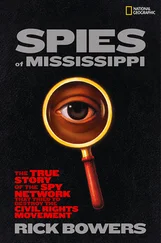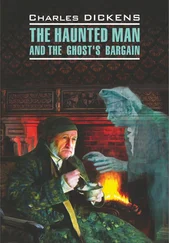Nix remembers some of what Molly wrote, but she never examined it as closely as Taer. Berliner was with Molly when she wrote some of the entries, so he can make good guesses at what was inside. Combined with Taer’s notes, this allowed me to partially reconstruct the contents.
According to all my sources, Molly Metropolis had written in the notebook during the nine months prior to her disappearance. Scattered throughout the notebook were sketches, lyrics, and plans pertaining to her music career, but a significant number of pages were given over to Molly’s other pursuits. She had divided the notebook, roughly, into thirds. The first third was written in April, May, and parts of June 2008. Molly spent the majority of this first portion discussing the work of Antoinette Monson, a fifteenth-century cartographer, who Molly describes as a “cartographer of the potential.” Because Taer gave Molly’s hot pink screen print of Sable Island only the most cursory of examinations, she didn’t immediately realize that this “cartographer of the potential,” has a nearly identical name to the one signed on the screen print: Antoine Monson.
Molly wrote the second third of the notebook in late June and early July. In this section, Metro wrote a number of song lyrics and concept notes about her third album, which she had tentatively titled Cause Oceanic , and which, of course, was never recorded. Taer didn’t quote from this section at all in her journal, Nix had to describe it to me. Nix doesn’t remember any of the final lyrics Molly wrote, much to my chagrin as a converted fan of Molly Metropolis’s music.
The most significant portion of Metro’s notebook was the final third, which she wrote from July to December. In those pages, Molly described an ambitious project called The Ghost Network, which had to do with the Chicago L system. Molly planned to design a gigantic map which would catalogue every single L train line ever built in Chicago and combine them with every single L train line not built — that is, every train line proposed but never incorporated into the system.
Molly Metropolis wrote, and Taer quoted: “What is a public transit system consisting of elevated trains? It’s not just a transport for bodies. It’s a system to transport systems (digestive, nervous, etc.), a series of tracks that transport ideas. It’s not the accessories of a city, lying on top of the skin, but the veins and arteries within the body.”
Calling Chicago’s public train system an elevated train line is a lie — many of the train tracks aren’t elevated — though it hasn’t always been so. In 1898, when the Chicago Transit Authority approved the plan for the train line in conjunction with Democratic mayor Carter Harrison, Jr., they planned a completely elevated train system and envisioned a glistening, futuristic track with trains whizzing between the tops of Chicago’s towers. The Chicago Tribune referred to the upcoming train system as the “Alley Elevated” or the “Alley L.” By the time the inaugural train took its twenty-mile-per-hour journey around the short, looping track, ‡the two most prominent Chi cago newspapers were using “the L” to refer to the train and the nickname became part of the urban nomenclature.
The owners of the Trib and the Evening Journal (which later became the Chicago Sun Times ), Mayor Harrison Jr. and prominent Republican politician Conrad Kelsey, put aside their long-standing rivalry to mutually use the L to wage a propaganda war against New York and its mayor William L. Strong. Prominent regional historian Albert Whitfeld asserts that both Harrison Jr. and Kelsey prompted their reporters to trump up or instigate some kind of competitive feeling between New York City’s underground subway and Chicago’s new elevated train line. From the September 17, 1899, issue of the Tribune :
Indeed, New York City’s train system runs below their streets, shaking automobiles and pedestrians alike when a train passes below, and forcing the families and professional men who use the train lines to crowd into dark tunnels. In contrast, Chicago’s glorious Elevated Train Line will hang above the city like some silver necklace on the neck of a comely heiress, rising above our shining city like a jewel. §
In the decades that followed Chicago’s first train ride, private companies started building and running elevated train lines, and the city let the corporate world take on the burden of building public transit.
In 1939, as countries in Europe began fighting among themselves for the second time in a century, a savvy but generally disliked businessman named Samuel Insull owned two-thirds of the train lines, cars, and stations. Insull treated Chicago utilities like a game of Monopoly, and because he controlled much of the L plus the Edison Electric Company and half of the Port of Chicago, Insull was winning.
Mayor Harrison Jr. dreamed of a publicly owned transit system. He wanted the city to buy all the existing train lines, then build new ones underground to serve as bomb shelters. Should the Blitzkrieg terrorizing London ever come to the United States, the ruling body of Chicago wanted a safe space to hide and convene a war council. To both gain control of the L and build his safe underground shelters, Harrison Jr. waged a publicity war against Insull. The Trib called him an Anglophile and a homosexual. Several of Insull’s male lovers, who may or may not have been well-paid actors, gave interviews with both of the city’s major newspapers, describing not only their “lewd lifestyle,” but also Insull’s plans to defraud major stakeholders in his company. Insull’s CFO implicated Insull in criminal activities, and Chicago detectives arrested Insull on charges of profiteering, racketeering, electioneering, and bribery. The state seized his business holdings, including all of his L lines. The city held him without bail and he died in prison before his trial began, succumbing to stab wounds accidentally inflicted as a bystander to a yard fight.
Harrison Jr. hired the architect-designer H.W. Benthom in 1943 to develop a plan to replace the entire elevated system with subways, each fortified. Benthom’s designs were a work of architectural beauty, a system that resembled a great river and its tributaries, with the Loop as a whirlpool at the center. A year later, the city completed construction on the first underground station at State Street. The disused station’s closely spaced support columns are still visible today through train windows when the Blue Line travels between Chicago and Damen.
By the time Benthom finished drawing his plans for the rest of the subway stations, Hitler had been put down and America had already bombed Hiroshima. The war was over. The appeal of underground shelters got lost among the plans for victory parades.
Plans for Benthom’s L underground systems are archived in the Chicago Public Records, along with every other rejected proposal. The Public Records contain every blueprint of every proposed addition, whether the addition was adopted or the proposed stations and lines were built. Since the first steam locomotive pulled its wooden coaches out of the Congress Street Terminal in 1892, the hundreds of proposals that were never adopted have grown into an overlapping maze of alternate L train lines and stations, an “alternate universe transit system,” as the science fiction blog io9 put it. ǁThe train lines that were never constructed are the bastards and doppelgangers of the L that covers the city today.
For reasons I failed to comprehend during my first research trip to Chicago, Molly Metropolis was fascinated enough with the L to dedicate years of her life to designing a map that layered each potential, but never constructed, alternative or expansion to the L on top of a map of all the functioning L lines. She also included train lines and stations that had once been part of the system but had gone out of use. She created the map on a computer and also painted it onto the wall of a secret office she kept in Chicago. This giant, unwieldy map is the project she called The Ghost Network.
Читать дальше












